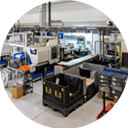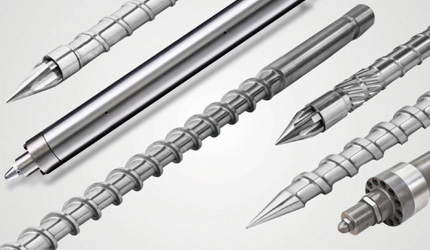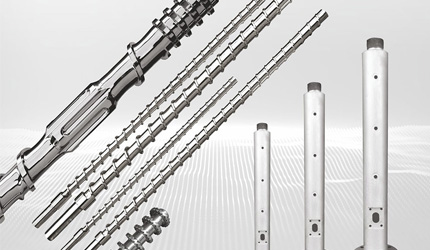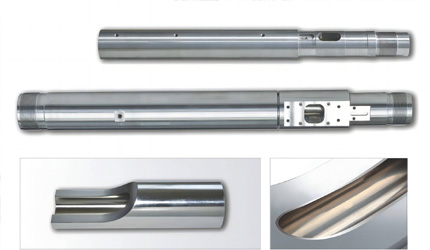What Makes Barrel Injection Molding Machines Essential in Manufacturing?
What Makes Barrel Injection Molding Machines Essential in Manufacturing?
Barrel Injection Molding Machine Fundamentals: Why the Barrel Matters
Definition and Role of the Injection Molding Machine Barrel
A barrel injection molding machine turns solid plastic pellets into exact, good-quality molded parts. It does this through steady heating, mixing, and injection. The barrel sits at the heart of this work. It is the chamber where raw polymers melt and gain pressure. Then, they move into the mold. The barrel controls how well plastic shifts from solid to liquid form. It also keeps the final product steady in size.
A solid barrel creates even heat levels and steady pressure. This stops material breakdown and ensures smooth flow. Studies suggest that many of the molding inconsistencies—including short shots or warpage—can be traced to poor thermal management or barrel wear. In short, the barrel defines the performance, efficiency, and quality of the injection molding process.
Key Components of Screw-Barrel Systems and Their Interaction
The screw and barrel work as one unit. The screw moves and squeezes the resin. The barrel gives the steady heat needed for melting.

| Component | Function | Impact on Product Quality |
| Screw flights | Convey and compress material | Determines melting uniformity |
| Barrel inner wall | Provides friction and heat control | Stabilizes viscosity |
| Heater zones & cooling channels | Manage temperature gradients | Prevents degradation |
| Nozzle and check valve | Guide molten flow into mold | Maintains injection pressure |
If the screw-barrel shape fits well, energy use drops. And the melt gets more even.
How Barrel Design Influences Melting, Mixing, and Cycle Time
Barrel design sets how well polymers melt and blend before injection. Even heat patterns, a smooth inside finish, and the proper L/D ratio keep things stable. They also shorten cycle time.
Three main factors stand out:
-
Uniform heating zones – ensure even melting and reduce material degradation.
-
Optimized L/D ratio – improves mixing and residence time for complex polymers.
-
Surface treatment and coatings – minimize friction and resist corrosion.
Barrels from nitrided or bimetallic alloys work well. They hold hardness and fight wear during long runs.
Manufacturing Efficiency Gains from High-Precision Injection Molding Barrels
Reduced Cycle Time and Higher Throughput via Optimized Barrel Systems
Cycle time shows manufacturing output well. A barrel with even heating and true roundness speeds up material readying. It also keeps melt quality steady from one cycle to the next. Just a one-degree shift in melt heat can slow cooling. This adds to the full cycle length.
Strong alloy barrels—like those from 38CrMoAlA steel—offer steady heat pass and firm build. Makers with these setups see even injection paths, fewer halts, and clear gains in work rate.
Material Compatibility, Wear Resistance, and Maintenance Implications
Different polymers put varied stress on the barrel—both mechanical and heat-based. Picking the right alloy and coating builds lasting strength. This matters most with filled or harsh materials.
| Barrel Type | Applications | Durability |
| Nitrided barrel | General-purpose plastics (PP, PE, PS) | Moderate |
| Bimetallic barrel | Glass fiber or mineral-filled resins | High |
| Carbide-lined barrel | Corrosive or high-temperature materials (PVC, PEEK) | Very high |
Quality, Consistency, and Defect Reduction
Steady melt flow and pressure keep the shot size and finish the same. A close-fit screw-barrel set holds shear evenness and heat balance. This cuts flaws like silver streaks, voids, and short shots. In the long run, this steadiness means less scrap and better yield.
Selecting the Right Barrel for Injection Molding Machines: What to Consider
Barrel Material, Coating, and Internal Surface Design
Picking material affects the work and the time. Usual barrel materials cover 38CrMoAlA, 42CrMo, and SKD61. Each gives a mix of hardness and ease to shape. Bimetallic liners from centrifugal casting reach even hardness and strong bonds. This stops bending in heat cycles.
Coatings like nitriding, chromium plating, and tungsten carbide layers cut polymer stick and ease cleaning. They also steadily heat across the wall.
Matching Screw-Barrel Geometry, Machine Size, and Application Type
A good match between screw and barrel sizes keeps feeding and melting stable.
Typical rules include:
-
L/D 20–24: thin-wall and fast-cycle applications.
-
L/D 25–30: multi-purpose general production.
-
L/D 30–36: engineering plastics requiring longer residence time.
A poor shape match causes uneven pressure and too much shear. This wears out screw and barrel faster.
Thermal Control, Zone Heating, and Barrel Temperature Profiling
New barrels use many PID-run heating zones. A balanced heat pattern—cooler at feed and rising to nozzle—helps even melting. It stops overheat.
Maintenance, Lifespan, and Cost of Ownership
Steady checks and care can greatly lengthen barrel life.
Suggested steps cover:
-
Cleaning and purging after each production run.
-
Periodic measurement of bore wear.
-
Checking heater bands and thermocouples every 2,000 operating hours.
Top bimetallic barrels stay in spec for over 30,000 hours of steady run. This trims swap costs and lifts full return on spend.
Application Scenarios: When Barrel Performance Drives Manufacturing Success

Automotive, Consumer Electronics, and Medical Part Production
Close-tolerance fields count on barrel steadiness for strict sizes and even strength. Car panels, medical needles, and phone shells all need uniform melt flow. Strong barrels make sure each piece hits safety and work marks.
High-Fill, Fiber-Reinforced, and Engineering-Plastic Materials
Materials with much filler—like glass-fiber nylon—are rough and need extra wear fight. Bimetallic or carbide-lined barrels stop early wear and keep the melt even. For makers handling fire-safe or thick materials, this strength holds steady quality over time.
Retrofit and Custom Barrel Solutions for Legacy Machines
Updating the barrel beats swapping the full machine for cost savings in upgrades. Fitted barrels with better inside shape and coatings raise output. They also stretch gear life.
CHUANGRI SCREW’s engineering team has aided many clients in fitting old machines with custom bimetallic injection barrels. This better melts evenness and shortens cycle times.
Sustainability, Material Reuse, and Minimal Waste
Good barrel setups cut waste by holding melt steadiness and stopping heat breakdown. Steady heat allows more use of recycled or reground material. This keeps part strength. It fits the shift to loop-based making.
Why Choose CHUANGRI SCREW’s Barrel and Screw System Solutions
Founded in 1990, CHUANGRI SCREW focuses on well-made barrels and screws for extrusion and injection setups. The firm runs a 12,500 ㎡ site in Zhoushan, China. It blends design, shaping, nitriding, and bimetallic coating under ISO 9001 rules.
Our Bimetallic Injection Molding Barrel, Nitrided Injection Molding Screws, and Solid Carbide Screw show years of build tweaks. These items mix strong metals with tight shape control (≤ 0.015 mm/m). They give sure, long-run work.
We team up tight with makers around the world. We shape barrels that speed melting, cut stop time, and lengthen gear life. This makes injection molding sharper and greener.
FAQ
Q: What materials provide the longest service life for injection molding barrels?
A: Bimetallic and tungsten-carbide-lined barrels offer superior wear resistance for filled or corrosive polymers. Nitrided barrels are sufficient for standard resins like PP and ABS.
Q: How does barrel design influence cycle time and output?
A: A well-designed barrel maintains uniform heat and pressure, ensuring faster recovery between cycles. This can reduce total cycle time by 10–20% depending on resin type.
Q: When is it practical to retrofit a new barrel instead of replacing the whole machine?
A: Retrofitting is ideal when mechanical systems remain functional. It restores efficiency and adapts existing equipment to modern polymers at far lower cost.
Q: What routine maintenance keeps an injection molding barrel in top condition?
A: Regular cleaning, temperature calibration, and bore inspection are key. Monitoring heater performance prevents uneven heating and early wear.
Q: How do precision barrels contribute to sustainable manufacturing?
A: They ensure consistent melting and minimize waste, allowing higher recycled material use and lower energy consumption—an essential part of modern green manufacturing.














